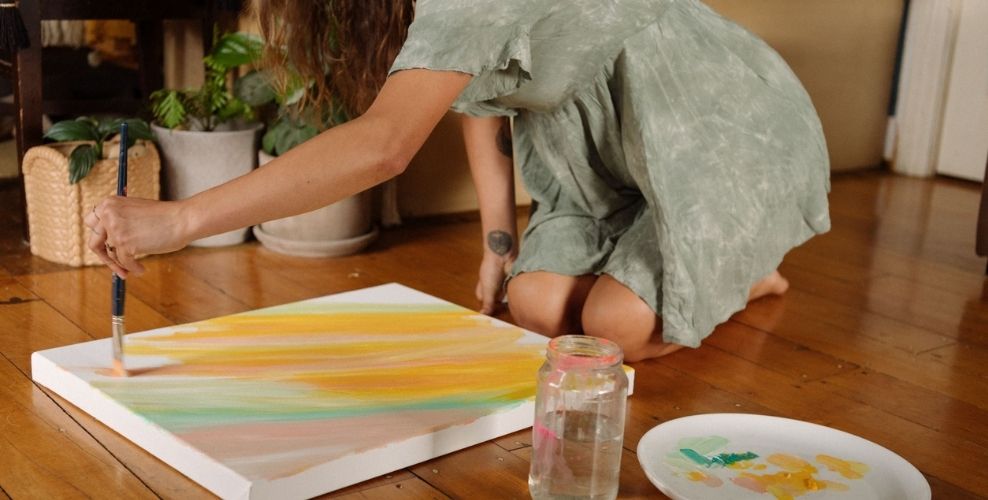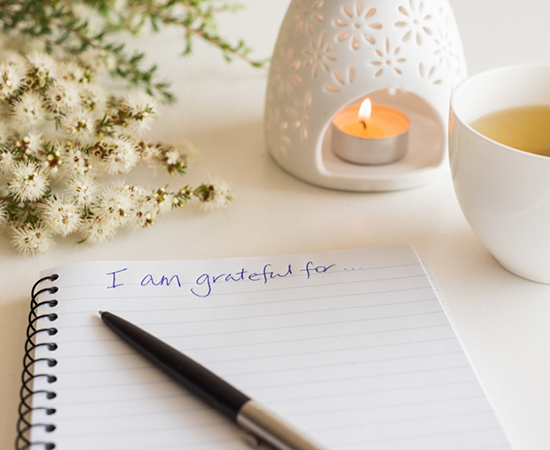Need a break from technology? Here’s how to do a digital detox
Quick overview
- Practicing good habits and boundaries around digital technology use is important in order to have a healthy relationship with it
- A regular technology cleanse can have numerous benefits for your mental and physical health, including reduced stress and anxiety, better sleep and potentially even weight loss
- A digital detox checklist can help give you clarity on what you want to achieve by undertaking an internet detox and the best way to prepare yourself for success

Almost half of the 60,000 Australians who took part in the Australia Talks survey said they were concerned that they spent too much time online.[1] We have a complicated relationship with our devices, it can often feel like we’re emotionally chained to them. In reality, these devices are just tools designed to make our lives easier.
So, what’s the problem? Addiction, lack of boundaries, work expectations, and the dreaded FOMO (fear of missing out) are just some of the issues that can make us feel like we don’t have control over the amount of time we spend looking at screens.
While it may not be realistic to throw away all your devices and go bush, a regular digital detox can help pull a potentially unhealthy relationship back into balance.
What is a digital detox?
It might sound simple enough, but what does an electronic detox look like? It’s a time frame (for example, a digital detox week) that you choose to stop or minimise your use of digital devices like smartphones, computers, and social media platforms.
If you’re feeling like digital detoxing might be for you, below are some of the signs that might tell you that it’s time for a phone detox and more.

6 signs you might need a technology detox
1. Text neck
You’re noticing your neck and shoulders are always tight, and you might even clench your jaw. If you ever catch a glimpse of yourself in the mirror while using your devices, you might see a hunched posture reflected back at you.This is a great time to put down your handheld devices for a while and learn some yoga poses to relieve tension and promote healthy posture
2. Always busy, always ‘on’
Do you have a sense of overwhelm, perhaps even anxiety, like there’s always something you need to do? You may have digital fatigue.[2]Until recently, it was easier to have clear boundaries around work and socialising. Nowadays, you are more likely to have 20 nagging notifications from your phone filling up your brain space.No wonder mindfulness techniques have gained enormous popularity in recent times – they are almost like clearing the cache for the most powerful computer you own, your brain!
3. FOMO
If you regularly walk away from a social media session feeling like you’re not enough, you’re not alone. A 2019 study found that digital overuse was linked to social pressure and a reduced sense of wellbeing.[3]
4. Your sleep is disrupted
If you’re struggling with sleep and waking tired, it could be time for a digital detox. Your circadian rhythm, which helps with normal sleep, is disrupted by blue light exposure from screens. This blue light confuses the rhythm, preventing a brain chemical called melatonin from being produced in effective amounts.[4] Melatonin has so many powerful actions in the body, including reducing inflammation, aiding repair of the body’s cells, and most importantly, helping to regulate the sleep-wake cycle.[3]
5. You’re always in a mood
If you’re sleeping poorly then you’re probably also feeling overwhelmed and anxious, all of which impacts your mood. One study found that 70% of study participants who regularly checked social media in bed had higher levels of insomnia, poor sleep and anxiety.[5]
6. The data doesn’t lie
Most smartphones track usage data that will tell you all sorts of information – how many times per day you unlock your phone, how much time you’re spending on various apps and overall screen time. Check your usage and if what you see shocks you, then you know what it’s time for!
What are the benefits of a digital detox?
Here are just a few of the many positives that a technology detox has to offer.
Better boundaries
An electronic detox is a practical form of self-care that helps you to create healthier boundaries with work and communication with friends and family. Only you can decide what your boundaries will look like, but the benefits of having them in place during a digital detox will almost guarantee you will want to stick with them beyond your set timeframe.
Mindfulness
When you’re pulled in a million different digital directions, it’s impossible to maintain focus on the present. Mindfulness is a muscle that you can strengthen over time with a daily workout. In time, you will learn to regain awareness of your thoughts and activities and bring yourself back to the present moment.

Reduce your weight
Too much screen time typically leads to a reduction in other activities, particularly of the physical variety. The World Cancer Research Fund International found compelling evidence that increased weight gain and obesity in both adults and children is linked with excess screen time.[6]
Deep, restorative sleep
The less time spent on devices, the easier your body can produce melatonin at its regular times (e.g. as the sun goes down).
Healthy levels of melatonin not only promote a deeper, more restorative sleep by encouraging a healthy circadian rhythm. Research also shows that a regulated circadian rhythm is important in promoting healthy physical and mental ageing and may even prevent Alzheimer’s disease.[7]
Sharpen your wit
You may remember a time when you had every important phone number memorised – now, you’re lucky to be able to recall your own. It’s undeniable that we now rely on smart phones to remind us of important events and details where we may have just had to remember them (or jot them down in your paper diary).
A digital detox may prompt you to practice your recall abilities before you jump on an app or search engine. One study found that the cognitive capacity of participants was reduced when their smart phone was present, even when turned off.[8]
How to make a digital detox work for you
A digital detox programme can look different for everyone depending on their age, work, usage, and reasons for wanting to detox. Read through the digital detox checklist below and decide what actions most resonate with you before you begin.

Digital detox checklist:
- Decide what is achievable for you: a whole day, a whole week, or a certain amount of time during the day e.g. from 6pm onwards. As with any type of detox, be realistic about what works for you.
- List your reasons for wanting to do a technology cleanse – there are so many, but what drives you to want to do this? Remembering your why will help you in your moments of temptation.
- Take a look at your phone usage and locate the main sources of use e.g. email, Instagram or Facebook, and consider ways to cut this down.
- Limit the use of certain apps: depending on what is achievable for you, either limit the app usage or remove it altogether.
- Sign out of any apps on your phone that are not necessary for your work or other commitments and move the icons to somewhere other than your main page (e.g. to a folder).
- Set your phone to black and white as this makes your phone less attractive to look at – simple, but effective!
- Let people know you’re having a digital detox week, especially anyone you have regular contact with as it may be easier for them to call you or expect that you won’t be responding to messages. Notifying people you speak to regularly has the added bonus of keeping you accountable.
- Designate times to put your phone away particularly at times when you would normally be inclined to scroll mindlessly (like dinner time, waiting for the bus, first thing in the morning).
- Invest in some fun activities like an adult colouring book, puzzle, a crisp new journal, or even a knitting kit for beginners. Rediscover your love of play while benefiting your brain and mental wellbeing. [10]
- Download helpful apps like Off-Time that lets you block certain calls, texts or notifications, or Freedom app which is great if you also want to block distracting websites on your computer.
- Pick out a good book and put it on your bedside table, ready for an analogue evening of reading – or take your book with you to read on your lunch break, while waiting for an appointment, or any other time you’re tempted to go down a scroll-hole.
- Unfollow or unsubscribe to anything that is just jamming up your feed with information or images that don’t make you feel good (this will help ease you back into using your devices in a healthier way).
Creating sustainable habits in the digital age
A digital detox isn’t forever, but it can really help you to reset some unhelpful behaviours in the long run. From here, it’s easier to create sustainable changes. You don’t need to cut technology out of your life completely, but you may be wondering how you can create a healthier relationship.

Top tips for digital detoxing:
- Using your phone’s digital wellbeing usage settings to limit certain apps to, for example, 30 minutes per day, can help you stay on top of your usage and stay aware.
- Celebrate tech-free Tuesdays (or any day that suits!) – no screens, dim the lights or even better, light some candles, dust off the board games or that book you keep meaning to read (phones on airplane mode and tucked away).
- Continue a mindfulness practice and notice times when you either feel like using your phone or how you feel after a social media session. Stay curious and aware of your thoughts and habits.
- Schedule a regular detox – perhaps at the beginning of each new season, one day per week or every 6 months – you decide!
- Set a daily alarm to let you know when it’s time to put your phone away for the evening. This will help your melatonin levels to naturally rise to ensure you get a good night’s rest.
There’s nothing wrong or unhealthy about using digital devices in moderation. They’re a brilliant tool for connection, for apps that keep you accountable, for capturing special moments and so much more.
These tools can be used for good, or they can start to rule your life. Creating better boundaries and the occasional technology cleanse can set you up for a healthier body and mind.
References:
- Australia Talks 2021. Accessed September 2021 from https://australiatalks.abc.net.au/
- Entrepreneur. Last updated November 2020, accessed September 2021 from https://www.entrepreneur.com/article/358112
- Buchi M, et al. Social Media + Society October-December 2019: 1–12.
- Sleep Foundation. Last updated June 2021, accessed September 2021 from https://www.sleepfoundation.org/bedroom-environment/blue-light
- Liu R, et al. BMC Cell Biol 2013;14:1.
- Bhat S, et al. Sleep Health 2018;4(2):166-173.
- World Cancer Research Fund International. November 2018, accessed September 2021 from https://www.wcrf.org/can-too-much-screen-time-affect-our-weight/
- Zisapel N. British Journal of Pharmacology 2018;175(16):3190-3199.
- Ward AF, et al. Journal of the Association for Consumer Research 2017;2(2).
- Huffington Post. Last updated January 2017, accessed September 2021 from https://www.huffpost.com/archive/au/entry/heres-how-picking-up-a-new-skill-can-help-your-brain_a_21657171



















